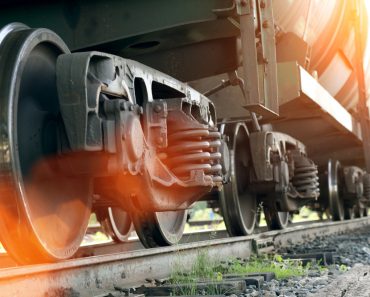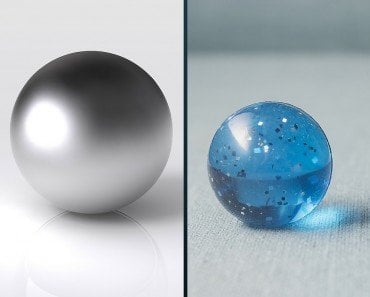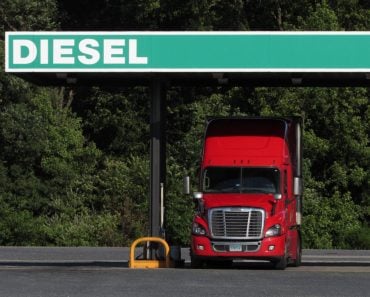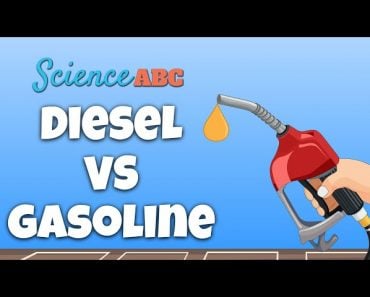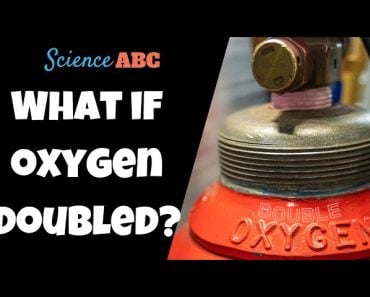Table of Contents (click to expand)
The main benefit of filling tires with air, as opposed to solid rubber, is that air-filled tires offer a lower rolling resistance, meaning that they require less energy to roll, and are therefore more efficient. In addition, air-filled tires are able to absorb shock more effectively than solid rubber tires, making for a smoother, more comfortable ride. Finally, nitrogen-filled tires have become popular in recent years because they are less likely than regular air-filled tires to fluctuate in pressure due to changes in temperature or humidity.
There are few things as inconvenient, annoying or dangerous as blowing out a car tire. It could happen by rolling over some broken glass, cruising past an old construction site and picking up a stray nail, or simply heating up thinned out tires while going 90 on the highway. The point is, changing busted tires is a part of life for millions of people, but it seems like tire manufacturers are just asking for trouble.
The outer part of the tire is made of rubber, but then filled with air like a time-bomb balloon just waiting to pop! Wouldn’t it make more sense to make tires completely out of rubber? Why the heck do we fill up tires with air anyway?

Short Answer: A pure rubber tire has a number of disadvantages, including a lack of shock absorption and faster wearing, but would still need to be replaced just as frequently.
Recommended Video for you:
The History Of Tires
When we think back to the history of tires, it doesn’t stretch as far back as the history of the wheel (130 years vs. 5,500 years). For simplicity sake, we’ll only look at the history of tires, which actually did begin with a solid rubber tire. When it comes to bicycles, they used to be made of iron bands on wooden wheels, but in 1868, the first rubberized tire with a hollow core were invented. 20 years later, with the advent of the first gasoline automobile, the pneumatic tire was first invented by Benz (the brand now known as Mercedes-Benz). The first pneumatic tire was a metal wheel covered in rubber and filled with air. Prior to this, in carriages and other rudimentary vehicles, the wheels had been made of metal, so this new concept was a game-changer.
Once synthetic rubber was invented in the early 20th century, it became far more efficient to make tires with more rubber and less metal, and the invention of the tread on tires increased efficiency significantly, and increased the road surface friction coefficient, meaning that the tire could gain traction more easily, making the ride safer.

Development continued through the balloon tire, the tubeless tire and the radial tire, through to the run-flat tire in the 1980s (able to continue driving even if a tire is punctured) and ultra high-performance tires for additional control and braking performance. Now, we are on the cutting edge of a new generation of airless tires (Non-pneumatic tires – NPT), which can be reused or recycled, and are primarily being designed for eco-friendly car models. In the future, there is a good chance that this sort of sustainable option will grow in popularity, but that doesn’t explain why air-filled tubes have been relied on for the better part of a century. So… what is the benefit of air over pure rubber, like we had in the past?
The Search For A Smooth Ride – Air Vs. Rubber
When it comes to tire design, the most important factor is the ability of air to be compressed and adjust its volume with ease, unlike something made of a solid material. For example, when you are flying over the road at 60 mph, striking a small obstacle like a rock or a bump in the road is instantly absorbed by a tire filled with air (complemented by the shock absorbers installed in modern cars), whereas a solid rubber tire would absorb and pass along the shock of striking the obstacle, making for an extremely bumpy and uncomfortable ride. An air-filled tired can experience and adjust to multiple deformations per second, absorbing the shock, so drivers hardly feel the effects of striking a small obstacle, unlike these guys…
Furthermore, inflated rubber tires also offer a lower rolling resistance (i.e. such tires minimize wasted energy as a tire rolls, which, in turn, decreases the required rolling effort), which is another plus in favor of inflated rubber tires.
This is why rubber tires were able to be used in the past, before high speed automobiles were on the roads. Going slower meant that the impact of striking obstacles was less, and the energy loss was less noticeable. However, at high speeds, the amount of energy loss while passing over bumpy roads would be extremely inefficient for the car, and would cause tires to wear down much more quickly. The fact is, most people do not replace their tires as a result of punctures and flat tires, but rather because the tread wears down, thinning the rubber and making the tires unable to hold traction on the road.
Solid rubber tires, particularly when driven at high speeds, would face the exact same problems of tread loss, at a faster rate, and due to the solid composition of the tires, would cost more to produce and dispose of, while also adding weight to the car as a whole, requiring more fuel expenditure.
Now, there are some vehicles that are optimized by using wheels that are inflated at different pressure levels (atmospheres), depending on the manner in which they will be used (e.g., mountain bikes – low pressure, racing bikes – high pressure). Now, since we have cleared up why we need air, is there any reason to choose one type of “air” over another?
The Nitrogen Tire Revolution
In recent years, the popularity of filling up tires with nitrogen, rather than boring old “normal air”, has increased significantly. Formula 1 cars have long used nitrogen in their wheels due to a few reasons; tires filled with nitrogen maintain a more stable tire pressure over a long period as nitrogen is less likely (than oxygen) to migrate through tire rubber. (Source) Furthermore, nitrogen-filled tires exhibit less pressure change with temperature fluctuations. On the other hand, regular air tends to respond more to temperature and moisture conditions, allowing it to change its pressure accordingly.
However, nitrogen is “dry”, and maintains a more consistent pressure in the tires, regardless of where the race is being held or what the relative humidity is on race day. This ensures greater safety and consistency, since there is no moisture in nitrogen. Other tire manufacturers and certain automobile companies have begun offering nitrogen-filled tires, but the true value of this is somewhat overstated, according to experts. The reason racecar drivers want nitrogen-filled tires is because they are moving at speeds in excess of 200 mph, so the slightest change in pressure or compression in the tires can be dangerous, if not downright deadly.
For the average driver, the slight fluctuations in humidity and consequent air pressure in the tires is negligible, but for those people who want to be on the cutting edge of…. everything, this has become a chic new option.
If you are like most of us, regular old air is all you need, but that’s definitely better than a solid rubber tire that would leave you bumpy and bruised every time you jumped on the highway!


